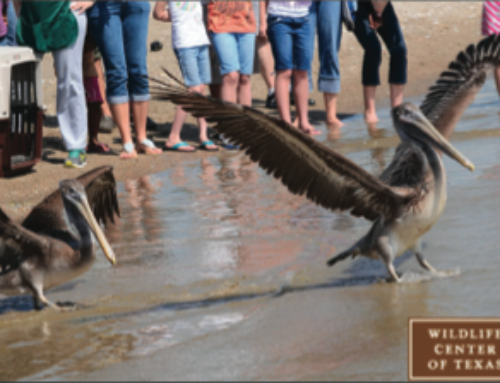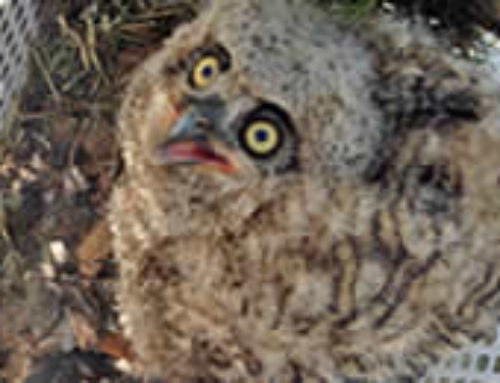 The Yellow Rail (Coturnicops noveboracensis) is an extremely secretive ground dwelling bird that is difficult to observe in the wild. Its somber cryptic coloration is the rail’s primary protection against predation. Because the rail rarely leaves heavy cover, it is considered a rare and elusive “get” for birders. Serious birders can spend their whole lives trying to track down this sparrow-sized rail.
The Yellow Rail (Coturnicops noveboracensis) is an extremely secretive ground dwelling bird that is difficult to observe in the wild. Its somber cryptic coloration is the rail’s primary protection against predation. Because the rail rarely leaves heavy cover, it is considered a rare and elusive “get” for birders. Serious birders can spend their whole lives trying to track down this sparrow-sized rail.
One of the biggest advantages to volunteering at the Wildlife Center is that unusual animals can be closely observed. In addition to viewing the animal in question, the idiosyncratic behavior seen in the wild is often very evident during rehabilitation. It is amazing to watch a generic hatchling develop into a quirky nestling and juvenile or an injured bird begin to flip its fish into the air so that it can then be snatched from the air head first.
Preferring to hide in dense inaccessible wetland brush and grass, the Yellow Rail is hard to flush. The rail can move soundlessly beneath the brush, thereby not revealing itself. Brief glimpses in flight usually aren’t enough for accurate identification before it quickly drops back to ground to hide. One exception is during rice harvesting when combines will flush rails into flight. The voice however is quite loud and distinctive; they are more often identified by the voice which sounds like two stones being tapped together which is repeated four to five times (tic-tic tic-tic).
Despite the short rounded wings and tail, that make lifting into flight and short flights more difficult, the Yellow Rail is a strong and fast flyer that migrates from its breeding grounds in Canada to wintering grounds along the Gulf Coast, around Florida and up to North Carolina. The largest wintering populations can be found along the Texas and Louisiana coasts.
The breeding season begins with the arrival of last year’s hatchlings in late spring. The coloration of the juveniles is so bright and crisp they are often mistaken for similar species such as the Sora. Breeding plumage isn’t fully developed until the third year. The sexes are similar in appearance. Males of breeding age develop a bill that is lighter yellow than the characteristic olive green. To confuse matters even more, some, but not all females of breeding age will exhibit the lighter yellow bill as well.
Hatchlings are covered in black down which is shed for coloration like its parents, but more dull. The post-breeding molt is so dramatic that birds are often left flightless for several weeks. On crisp fresh feathers, the rails will head back to their wintering grounds.
Because most members of the Rail Family are very secretive, an accurate census is difficult. However, 25% of the extant species are threatened or believed extinct, so the Yellow Rail population is probably in decline also. Unlike many species that adapt to human incursion, the Yellow Rail is very sensitive to habitat degradation and destruction. Wetlands are indeed the cradle of the animal world and without these marshy mucky places, many species would domino into extinction.
 To ensure that the rail was returned to the optimum habitat, Margaret Pickell contacted San Bernard Wildlife Refuge. A Wildlife Refuge official confirmed Yellow Rail were wintering onsite. The official went so far as to identify exactly where the birds were congregating by intentionally flushing them a couple of days earlier. Once the Yellow Rail was in prime condition, Ms. Pickell was joined by the San Bernard Wildlife Refuge official to release the rail.
To ensure that the rail was returned to the optimum habitat, Margaret Pickell contacted San Bernard Wildlife Refuge. A Wildlife Refuge official confirmed Yellow Rail were wintering onsite. The official went so far as to identify exactly where the birds were congregating by intentionally flushing them a couple of days earlier. Once the Yellow Rail was in prime condition, Ms. Pickell was joined by the San Bernard Wildlife Refuge official to release the rail.
 Can you find the rail now that it is on the ground?
Can you find the rail now that it is on the ground?

How about now? No wonder these birds are so hard to find.






Leave A Comment